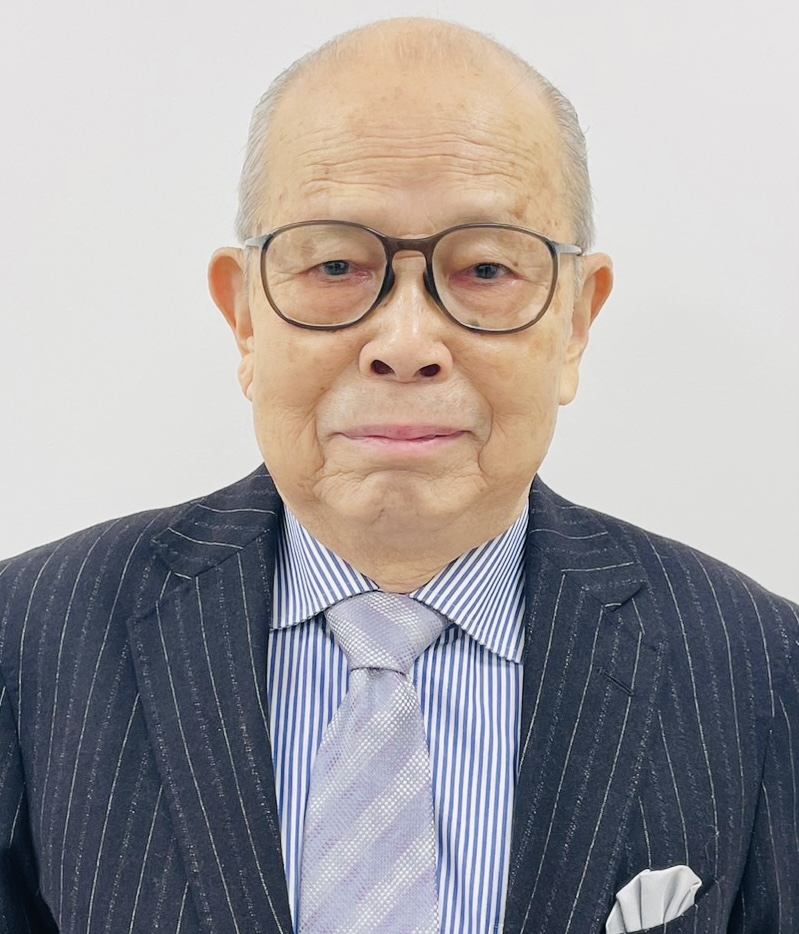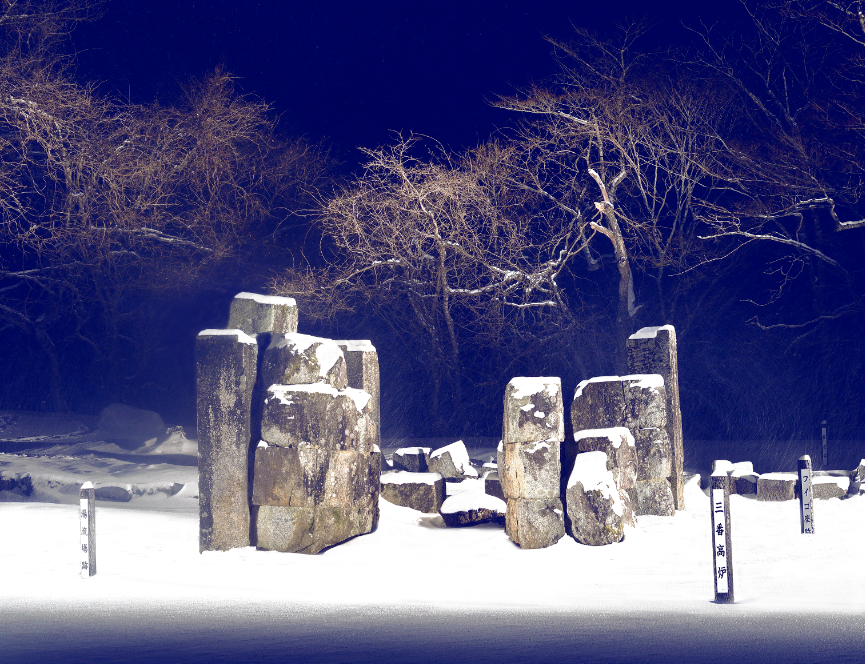PEOPLE
~The Appeal of Cultural Heritage as the Chief Researcher of the Industrial Heritage Information Centre~

Senior Researcher, Industrial Heritage Information Centre
Honorary Advisor, Nippon Mining Co., Ltd.
The Ambassador of Supporting Kamaishi Hometown
Born 1934 in Ashio-cho, Tochigi Prefecture, Japan, he graduated from the Department of Industrial Chemistry, Faculty of Engineering, Tokyo Metropolitan University in 1957, and joined Nittetsu Mining Co., Ltd. He has served as director of Nittetsu Mining Co., Ltd. and representative director of Kamaishi Mining Co., Ltd. Currently, he is an Honorary Advisor of Nittetsu Mining Co., Ltd. Participated in the establishment of the “NPO Ashio Green Growing Association” and the “NPO Ashio History Museum.” He is also involved in research on industrial archaeology and mining history.
Onozaki's grandfather was Ittoku Onozaki, the official photographer of the Ashio Copper Mine in the Meiji period. Onozaki, as a researcher, has been recovering Ittoku's photographs that have been offered to him since his student days. In his work, he lives for ‘iron’, not ‘copper’, and worked at Kamaishi Mine in Iwate Prefecture of Nitetsu Mining Co., Ltd., where he contributed to making the iron category a World Heritage Site as an honourary advisor to Nittetsu Mining Co., Ltd. He is currently a senior researcher at the Industrial Heritage Information Centre, where he disseminates information on cultural heritage.
A large number of photographs of the Furukawa Ashio Copper Mine, one of the companies that led the modernisation of Japan, are in the collection and are being digitally documented one by one. The database was created and opened to the public in 2022, focusing on the ‘rock drill’ and ‘aerial cableway’, which were the first industrial machines domestically produced in Japan at Ashio; ‘hydroelectric power generation’ and ‘electric railway’ in 2023; and the ‘mining damage prevention work’ in 2024. The Industrial Heritage Information Centre has been reporting on the background and significance of the project.
--- You are currently contributing as a senior researcher to the Information Centre for Industrial Heritage, but how did you become involved with the Information Centre in the first place? Can you also tell us about your encounter with Koko Kato, Director of the Information Centre?
ONOZAKI: I first met Ms. Kato in 1999 when she was publishing her book ‘Industrial Heritage’ for the Nikkei newspaper. Since then, we have had long-standing exchanges related to industrial heritage.
In 2013, I participated in the National Conference on Industrial Heritage (the first Tokyo Conference) and in 2014 in the International Conference on Industrial Heritage (at Hotel Okura), where preparations for the registration of Sites of Meiji Japan's Industrial Revolution as a UNESCO Heritage Site began under Ms. Kato, with industry, government and academia working in unison.
So, I was assigned to cooperate with then-Cabinet Counsellor Kato as a member of the Industrial Project Team and Steel Industry Working Group of the Council of Experts.
Then, in 2015, the Industrial Heritage Information Centre was established after approval for registration as a UNESCO cultural heritage site, and since then I have been in charge of guide recruitment, training, data collection and various surveys as a chief researcher.
--- After graduating from university, you joined Nittetsu Mining Co., Ltd., where you served as director and representative director of Kamaishi Mine Co., Ltd., and are currently an honorary advisor to Nittetsu Mining Co., Ltd. What triggered your interest in your field of expertise, iron and steel? And have you always had an interest in modern heritage?
Onozaki: I was born and raised in the Furukawa Imperial Photo Studio in a copper mining town that was said to be the best in the East, and I am someone who was immersed in the mining industry. I was encouraged by the chief professor of my university to join Nittetsu Mining Co., Ltd. as a research worker dealing with the mining resources of Nippon Steel Corporation, and it was with a sense of destiny and ambition that I entered the company.
I joined the company in 1957 and worked hard for one company until 2000, experiencing the post-war industrial recovery, the introduction of technology, the period of rapid growth, the bursting of the bubble economy and the energy revolution. During that time, the primary industry sank and mines and coal mines closed one after another. It was an era of scrap and build.
I met Ms. Kato at a time when these industrial heritage sites were being scrapped one after another. Since then, activities have started to preserve the footprints of the people who were active in this period, to pass them on and to contribute to the development of the region. It was in the middle of this whirlwind that I decided to take action, and first of all, I decided to take the lead in preserving the heritage of Kamaishi as a task that I could do. In fact, Ashio was also in the forefront of this project.
--- Kamaishi is home to the “Hashino Iron Mine,” a particularly important component part of the Sites of Meiji Japan’s Industrial Revolution, but was Mr. Onozaki also involved when the area was being prepared for World Heritage listing?
Onozaki: I am involved to the extent that I can: in 1957, the year I joined the company, there was a 100th anniversary, and I met the Hashino blast furnace for the first time during my practical training. It is rare in the world that ruins of a blast furnace from that era still remain. When I was president of Kamaishi, I often took visitors to the site. I am proud that our own facilities remain as a World Heritage Site.

Representative Director, National Congress of Industrial Heritage
(Honorary Advisor, Kyushu Railway Company (JR Kyushu)
Senior Researcher, Industrial Heritage Information Centre
Honorary Advisor, Nippon Mining Co., Ltd.
The Ambassador of Supporting Kamaishi Hometown
Former Director of Nagasaki City World Heritage Office
Former General Manager, Nagasaki Shipyard and Machinery Works, Mitsubishi Heavy Industries, Ltd.
Chairman, Fujisankei Group
Executive Managing Advisor, Fuji Television Network, Inc.
Executive Managing Advisor, Fuji Media Holdings, Inc.
Advisor, Federation of Japan Port and Airport Construction Association
(Ex. Chairman of Specialists Center of Port and Airport Engineering)
Mayor of Nagasaki City
Former Director of the Sano Tsunetami Memorial Museum (currently known as Sano Tsunetami and the Mietsu Naval Dock History Museum)
Director of NPO Association for Thinking about Satoyama
Director of National Congress of the Industrial Heritage
Honorary Chief Priest Toshinari Ueda
Former Mayor of Omuta City
Archaeologist and Heritage Conservation Specialist
A fellow of the Japan Federation of Engineering Societies
Team Member of the Industrial Project Team Office for the Promotion of World Heritage Listing under Cabinet Secretariat
Governor of Kagoshima Prefecture
Mayor of Hagi City
Mayor of Uki City, Kumamoto Prefecture
The Former Employee of Nippon Steel Corporation
An Associate Professor of the Faculty of Science and Engineering in Iwate University
Chairman of the Tourist Guide Association of Misumi West Port
President of Kuraya Narusawa Co., Ltd.
Chairman of Izunokuni City Tourism Association
Director and General Manager of Gunkanjima Concierge
Producer of the Gunkanjima Digital Museum
Owner at Tōge Chaya
Chairman: Mr. Hidenori Date
President: Mr. Masahiro Date
Proprietor, Houraikan Inn
Representative Director of Egawa Bunko non-profit incorporated foundation
The 42nd head of the Egawa Family
Democratic Party for the People (DPP) Representative for Nagasaki Prefecture
President of the NPO, Way to World Heritage Gunkanjima
Representative Director
MI Consulting Group
President of Watanabe Production Group and Honorary Chair of Watanabe Productions Co., Ltd.
Member of the House of Councillors
Governor
Kagoshima Prefecture
World Heritage Consultant
Director and Dean, The Kyushu-Asia Institute of Leadership
Representative Director, SUMIDA, Inc.
Journalist, founder of the Shimomura Mitsuko Ikikata Juku School
Representative, Rally Nippon
Chairman, Sites of Japan’s Meiji Industrial Revolution World Heritage Route Promotion Council Director, National Congress of Industrial Heritage
Representative Director, General Incorporated Foundation National Congress of Industrial Heritage (Advisor, Public Interest Incorporated Foundation Capital Markets Research Institute)
Mayor of Nagasaki City
Policy Director at Heritage Montreal
World Heritage Consultant
Executive Director of Kogakuin University
Heritage Architect and International Consultant
Head of Data Acquisition at The Glasgow School of Art’s School of Simulation and Visualisation
Head of Industrial Heritage, Historic Environment Scotland, Edinburgh
Scottish Ten Project Manager, Historic Environment Scotland, Edinburgh
Mayor of Izunokuni City, Shizuoka Prefecture
Pro-Provost and Chairman of Council of the Royal College of Art. Heritage advisor of Canal & River Trust for England and Wales.
Dean of Tokyo Rissho Junior College
Professor emeritus of Keio University
Mayor of Kitakyushu City
At the 39th session of the World Heritage Committee convened in Bonn, Germany, from June 28 to July 8, 2015, the decision was approved to inscribe the Sites of Japan’s Meiji Industrial Revolution on the World Heritage list.
At a celebratory party held to mark the occasion, some of the primary promoters of the project spoke of their joy in achieving their goal and of the trials and tribulations to getting there.
Director and Managing Executive Officer, Hanshin Expressway Company Limited
Member, Board of Directors, National Congress of Industrial Heritage
Vice-Governor of Shizuoka Prefecture
Mayor of Hagi City
Chairman, Tokyo Metro Co., Ltd.
Mayor of Omuta City
Deputy Director-General, Lifelong Learning Policy Bureau, MEXT
Former Counsellor, Cabinet Secretariat
Mayor of Kamaishi City
Member, Board of Directors, National Congress of Industrial Heritage Counselor, Shimadzu Limited
Chairman of the Consortium for the World Heritage Inscription of Modern Industrial Heritage (Kyushu-Yamaguchi) and governor of Kagoshima Prefecture (as of 2015)